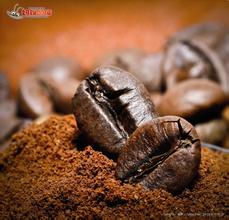Story characteristics of coffee bean producing areas in Kenya is the flavor of hand-brewed coffee described is Kenyan coffee sour?
Kenya coffee beans producing area characteristics method flavor description taste varieties producing area introduction
Bourbon Bourbon was first brought to Kenya for cultivation. In the 1950s, Scott Laboratory, an agricultural research institution at that time, made unremitting efforts to select two excellent hybrids SL-28 and SL-34, overturning the long-standing bias that artificial breeding varieties were not excellent in natural varieties. SL-28 and SL-34 help Kenya coffee to form its own unique flavor characteristics and establish a perfect reputation in the coffee industry.
As with other coffee-producing governments, SL-28 and SL-34 have withstood the test of time, cultivating loyal fans for generations of Kenyan coffee. The Coffee Research Foundation has begun efforts to promote a new variety, Ruiri 11, and promoters have assured coffee lovers that the new variety still has the classic flavor of Kenyan coffee, but continued efforts have not won the approval of coffee drinkers, who agree that the new variety lacks taste and the future of Ruiru11 remains to be seen.
In addition to the prestigious traditional Arabica coffee, Robusta coffee is also grown in Kenya's western lowlands.
Kenya coffee growing methods
There are mainly two types of large farms (estates) and cooperatives (Cooperatives). The former generally has a larger planting area and independent coffee processing facilities. Most coffee production is done by a large number of small farmers, who form coffee cooperatives. Coffee cooperatives hire managers to oversee their members 'coffee processing, even to the point of managing each coffee tree.
Kenyan coffee is obviously more spicy and unrestrained than shade trees in many high-quality producing areas, and shade trees are not common. In addition, Kenyan coffee is rarely certified, and variety and environmental factors make the use of pesticides somewhat necessary. Organic certification, which is popular in other countries, is rare in Kenya.
Kenya coffee harvest season
Kenya has two harvest seasons, the main one from October to December and the secondary one from May to July.
Kenya Coffee Processing
Large farms often have separate treatment facilities. A large number of small farmers usually pick ripe coffee berries by hand. Coffee picking is labour-intensive, requiring the whole family to work and even workers to be hired during harvest season. Fresh coffee needs to be transported in time to a cooperative-owned coffee processing plant for pulping, which may be carried by ox cart, pickup truck or truck. After dehulling, the Parchment coffee is stored briefly in the cooperative's processing plant and sent to a privately owned plant for dehulling

Important Notice :
前街咖啡 FrontStreet Coffee has moved to new addredd:
FrontStreet Coffee Address: 315,Donghua East Road,GuangZhou
Tel:020 38364473
- Prev

Flavor and taste characteristics of Ugandan coffee beans introduction to manor quality by grinding scale treatment
In order to improve the coffee quality and reduce the cost, Uganda cancelled the exclusive management right of the Coffee Management Committee (Coffee Marketing Board, referred to as CMB) in November 1990. Most of the work originally undertaken by the Coffee Management Committee has now been handed over to the cooperative organization. Privatized Coffee Institute
- Next

Flavor description of coffee beans treated with El Salvador black honey introduction of varieties in manor area
The flavor of coffee beans treated with El Salvador black honey describes the taste of coffee beans. We know that the processing methods of raw coffee beans can be divided into three types. The distinction between each method is based on the fact that several layers of matter are removed from the fruit before the coffee is dried. The following is a list of the three major processing methods: 1. Natural sun treatment: retain all substances 2. Honey treatment: remove the peel and pulp
Related
- Detailed explanation of Jadeite planting Land in Panamanian Jadeite Manor introduction to the grading system of Jadeite competitive bidding, Red bid, Green bid and Rose Summer
- Story of Coffee planting in Brenka region of Costa Rica Stonehenge Manor anaerobic heavy honey treatment of flavor mouth
- What's on the barrel of Blue Mountain Coffee beans?
- Can American coffee also pull flowers? How to use hot American style to pull out a good-looking pattern?
- Can you make a cold extract with coffee beans? What is the right proportion for cold-extracted coffee formula?
- Indonesian PWN Gold Mandrine Coffee Origin Features Flavor How to Chong? Mandolin coffee is American.
- A brief introduction to the flavor characteristics of Brazilian yellow bourbon coffee beans
- What is the effect of different water quality on the flavor of cold-extracted coffee? What kind of water is best for brewing coffee?
- Why do you think of Rose Summer whenever you mention Panamanian coffee?
- Introduction to the characteristics of authentic blue mountain coffee bean producing areas? What is the CIB Coffee Authority in Jamaica?

